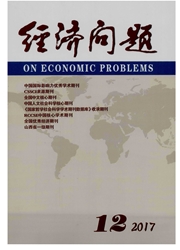

 中文摘要:
中文摘要:
分析城市非农用地的生态成本有助于城镇化过程中合理配置土地资源。利用环境DEA技术,测算中国28个省区市在不同碳减排压力下经济发展与土地保护的协调难易度和城市非农用地的生态成本及其影响因素。结果表明,在一般环境约束下,全国大多数地区已经充分挖掘了经济发展的潜力;但在严格环境约束下,却能实现碳排放继续减少和经济进一步增长的双重目标。城市非农用地生态成本的主要影响因素有经济增长、产业结构、对外开放度、土地利用强度和污染费用,它与前三个因素是正相关关系,与后两个因素是负相关关系。在城镇化进程中全国各地区城市非农用地生态成本差别较大,三大区域中经济最发达的东部地区生态成本最大,经济欠发达的中西部地区生态成本相对小,因此不支持实施区域间土地占补平衡政策。提高土地利用效率并在环境承载能力内发展经济是缓解土地危机的最好途径。
 英文摘要:
英文摘要:
It contributes to rationally allocate of land resources by analysis of urban non- agricultural ecological costs. This paper estimated the difficulty level of the coordination between economic development and farmland protection,and the urban non- agricultural ecological costs of China's 28 provinces under the different carbon emission constraint by environmental DEA technology. It drew the conclusions that,most of the country has been fully tap the potential of economic development under general environmental constraints; but it could achieve the dual goals of carbon emissions reduction and economic further growth under strict environmental constraints. The main factors affecting the ecological costs of urban non- agricultural land are economic growth; strength and pollution costs of industrial structure,openness,land use,the first three factors are positively correlated,with the latter two factors are negatively correlated. In the process of urbanization,there is greatly difference among the three areas of China. The ecological costs of developed eastern China are the largest while the costs of developing central and western China are relatively smaller. Therefore,it doesn't support the policy of interregional land requisition- compensation balance. It's the best way to ease the land crisis through improving land use efficiency and developing economy within the capacity of ecological environment.
 同期刊论文项目
同期刊论文项目
 同项目期刊论文
同项目期刊论文
 期刊信息
期刊信息
